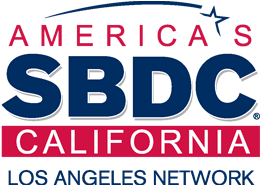California’s paid sick leave law, called the “Healthy Workplaces, Healthy Families Act of 2014 (AB1522),” took effect January 1, 2015; however, the right to accrue and take sick leave under this new law took effect July 1, 2015. The new law is meant to promote a healthy workforce, help employers reduce turnover, and increase productivity. Check out the Q&A below for more information about the law.
1. What Is the Healthy Workplace, Healthy Families Act of 2014? “The new law provides that any employee who, on or after July 1, 2015, works in California for 30 or more days within a year from the beginning of employment, is entitled to paid sick leave. Employees, including part-time and temporary employees, will earn at least one hour of paid leave for every 30 hours worked. Accrual begins on the first day of employment or July 1, 2015, whichever is later.” Quoted from Small Business Majority.com more
2. Which Employers Are Covered? The act applies to private and public employers regardless of size. “Any employee who has worked in California for 30 or more days within a year from the beginning of employment will be entitled to paid sick days under the Act. Part-time and full-time employees are covered, as well as exempt and nonexempt employees. For information on the groups of employees not covered by the law visit: Cal Chamber’s Guide here (page 1)
3. What Are Employee EligibilityY Requirements for Using Paid Sick Leave? “Employees may use accrued paid sick leave beginning on the 90th day of employment, may request paid sick leave in writing or verbally, and an employee cannot be required to find a replacement as a condition of using paid sick leave. In addition, an employee can take paid leave for the employee’s own or a family member’s diagnosis, care or treatment of an existing health condition or preventive care or for specified purposes for an employee who is a victim of domestic violence, sexual assault or stalking.” SmallBusienssMajority. com more
4. How much Sick Leave will an Employee Receive? An employer has several approaches to choose from including: 1) Statutory Accrual Method 2) Optional Accrual Method that provides no less than 24 hours by the 120th day 3) Alternative Accrual for New Hires 4) Pre-Existing Employer Policy 5) Lump-Sum Method. For information on each click here.
5. What if You Already have a Sick Leave or Paid Time Off Policy? “As long as an employer has a paid leave policy or paid time off policy (PTO) that meets the law’s leave time requirements, and allows that time to be used for the same purposes, the employer is not required to provide any additional leave. The new law establishes a minimum requirement, but an employer can provide sick leave through its own plan or establish different plans for different categories of workers. However, each plan must satisfy the accrual, carryover, and use requirements of the law. If an employer provides a policy that exceeds the law’s minimum requirements, including providing a specific cap, the policy must be clear as to the additional terms that apply to that business’s employees. An employer is in compliance with the paid sick leave law as long as the business provides at least 24 hours per year of paid leave that can be used for healthcare and meets other requirements in the law.” Quoted from SmallBusinessMajority.org – California Paid Sick Leave Law more
6. What about Local Ordinances? Employers are to comply with both the local and California laws. The employer will need to provide the more generous provision or benefit to an employee where the laws differ between local and state. e.g. in the City of San Francisco separate ordinances exist requiring paid sick leave. If the local ordinance for example requires more accrued sick leave, that provision would take precedence, since it’s a more generous. See here for more from the National Partnership for Women and Families; California noted on page 3.
7. What Are the Consequences of Noncompliance? According to CalChamber’s site if employees do not comply with the new law, they can face Labor Commissioner enforcement measures including giving back pay, damages, and penalties ranging from $50 to $4000. The law also states that employers are prohibited from retaliating against employees who take sick leave.” More examples
8. 6 Steps to Successful Compliance: 1) Display poster on sick leave, document policy and share with your staff. Click here for the poster. 2) Provide written notice to individual employee at the time of hire with paid sick leave information. Click here for the notice. 3) Provide for accrual of one hour of sick leave for 30 hours of work for each eligible employee to use. 4) Allow eligible employees to use accrued paid sick leave upon request or notification. 5) Show how many hours of sick leave an employee has available; must be on a pay stub or document issued the same day as a paycheck. 6) Keep records showing how many hours have been earned and used for three years. Department of Industrial Relations – Paid Sick Leave Facts and Resources _slide 8.
9. What does AB 304 Cover? AB 304 passed July 13, 2015 as urgent legislation to provide more clarity and address employer areas of concern about the paid sick leave law. The amendments clarify who is a covered worker, exempt retired annuitants, address unlimited sick leave policies, provide alternative methods for paying employees who use sick leave and more. For a complete list of what the amendments cover and explanations from CalChamber click here.
10. Where can I Find more Resources? California Department of Industrial Relations, CalChamber, and Labor Commissioner. Don’t forget to check your payroll provider and legal counsel for extra resources.






